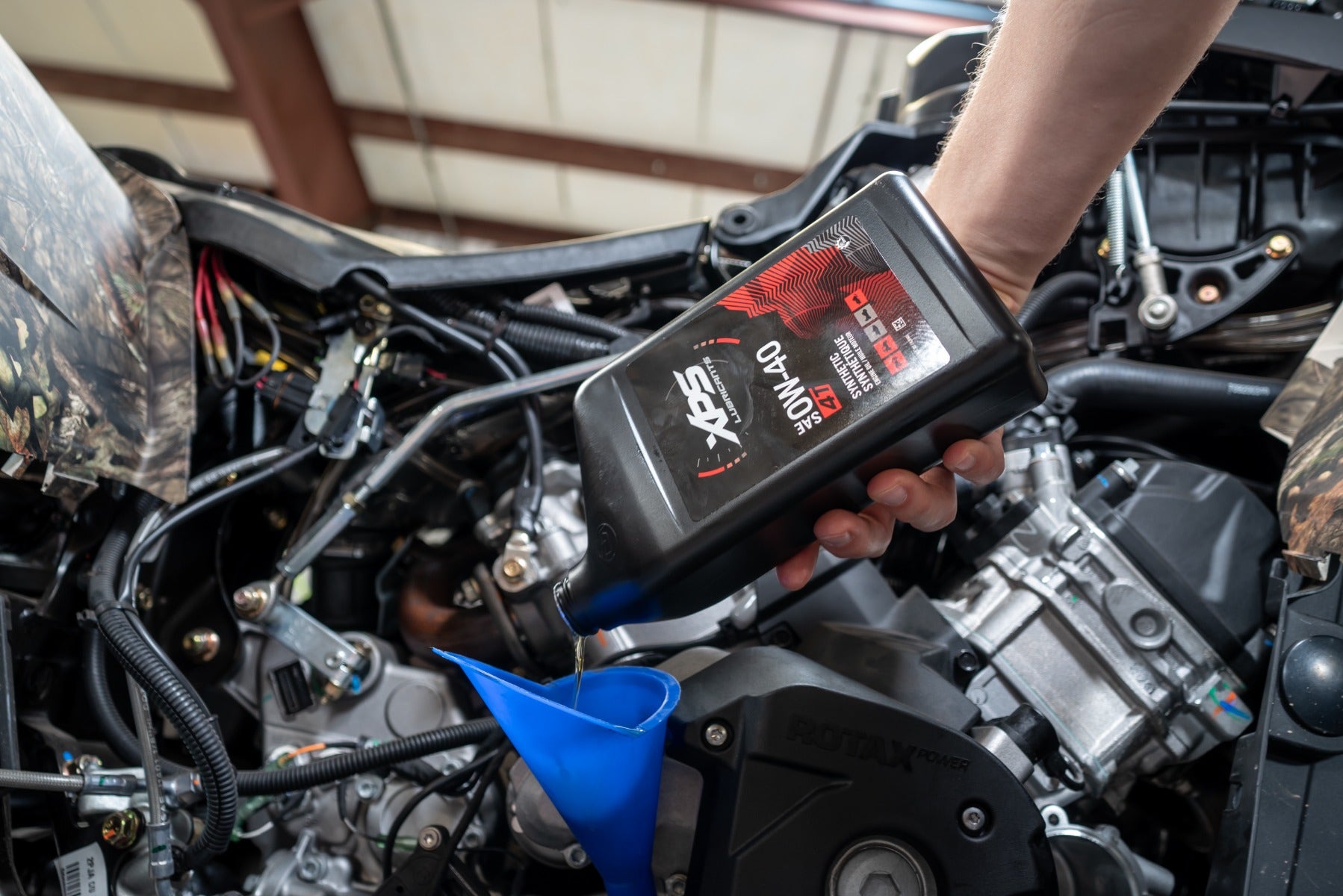Both 2-stroke and 4-stroke oils are designed to lubricate your engine, keep it clean and operating at peak performance. But did you know these two types of oils go about that process in completely different ways? Let’s take a closer look.
First, it’s important to understand that a 2-stroke oil is designed to mix with fuel and is burned through the combustion process. This is why 2-stroke engines require either pre-mixing oil with the fuel to a specified ratio before you fill your fuel tank or filling a separate oil reservoir that mixes the oil and fuel automatically.
A 4-stroke engine recycles the oil through a filter and is re-used as an oil pump pushes the filtered oil to the critical parts of the engine to lubricate and clean it. 4-stroke oil has a usable life and needs to be changed at predetermined intervals – at least once a year or sometimes more often depending on the operating environment.

OIL MAKEUP
Because the two versions of the oil go about their jobs differently, the chemical makeups of 2-stroke and 4-stroke oil are also engineered differently.
It starts with the amount of base stocks in each. A 2-stroke oil has a foundation of 40-45% base stocks. A 4-stroke oil will typically start with 60-95% base stocks. That’s a big difference, but when you look at the rest of the chemical makeup, you’ll understand why.
Each XPS 2-stroke and 4-stroke oil has its own additive package specifically engineered for its intended engine application. That’s really where the similarities end. After that, a 2-stroke engine incorporates solvents and an additional lubricity agent.
When it comes to modern 2-stroke engine applications, having a synthetic oil is much more beneficial than a mineral oil or even a synthetic blend oil. The very nature of a synthetic oil means that the molecules are engineered to a specific size, meaning the oil interacts with critical engine components in a consistent manner. What exactly does that mean to you as a rider? It means your engine is experiencing fewer variances internally, burns cleaner in combustion with less deposits, components are wearing evenly and can consistently perform at an optimal level. Translation: Advantage, you!

In terms of 4-stroke engine oils, along with their base stocks, they’re accompanied by the necessary additive package and a viscosity modifier to keep oil flowing freely and consistently in a wide variety of conditions. And 4-stroke oils are formulated differently based on their intended use. For example, Automotive 4-stroke oils are formulated with friction modifiers that are designed to increase fuel economy. However, that additive can be very harmful to performance in a powersports engine where it would be detrimental to clutch and transmission performance. Using the correct 4-stroke oil for the application is critical.
Viscosity – or the rate at which oil flows – is important as well. The oil in a 4-stroke engine needs to keep moving through the engine, filter, and oil pump to accomplish its tasks. How efficiently a base stock can disperse heat is also extremely important as the oil is used to aid in engine cooling. It’s always important to follow the manufacturer recommendations for the viscosity of 4-stroke oil you use, as that weight of oil has been tested and approved to protect that engine design in the conditions it faces.
For instance, if a 10W-50 viscosity is recommended, a 10W-30 is not an acceptable substitute because it won’t protect the engine properly at higher temperatures. Similarly, if a 0W-40 viscosity is recommended for an application, a 10W-40 won’t work because it doesn’t offer the low-temperature protection needed.
THE BOTTOM LINE
2-stroke and 4-stroke oils are two different animals. One is not compatible with the other. Each oil has different tasks to accomplish within the engine and different methods of accomplishing their tasks. Using the wrong oil in either case risks leaving critical parts of your engine unprotected and will very quickly lead to catastrophic engine failure.
Now that you understand the differences between 2-stroke and 4-stroke engine oils, check out a few of our other tips in the XPS Zone on our website and give us a follow on social media for more great vehicle care tips. Long live adventure!









